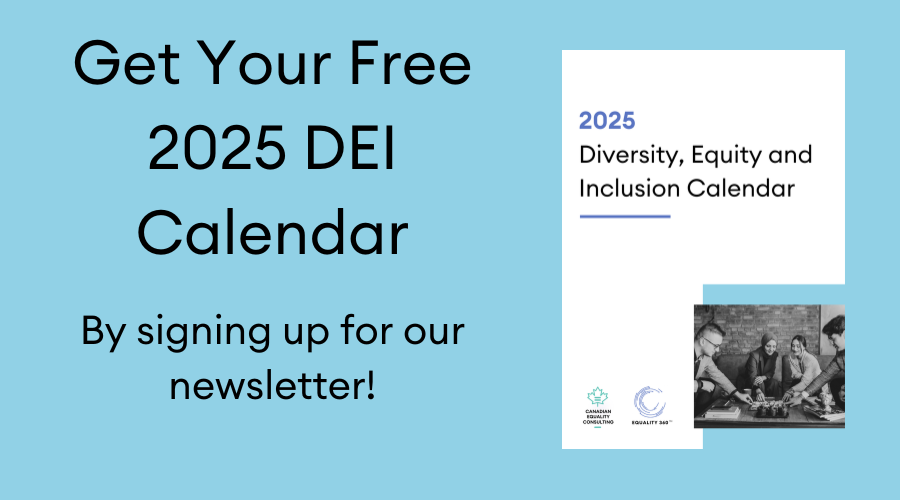
How to Support Your Employees with Invisible Disabilities
As the name implies, invisible disabilities are disabilities that are not immediately noticeable. In a society where disabilities are often marked by signage featuring a little white figure in a wheelchair (parking spaces, ramps, electronic doors), a disability that does not have immediately noticeable physical features, behaviours, or assistive devices can challenge our preconceptions of what a person with a disability “looks” like.
Invisible disabilities can run the spectrum from learning disabilities, processing disorders, chronic pain, brain injuries, hearing or sight loss, or digestive issues, among many others, and can affect how the individual interacts with the world in a wide range of ways. According to the 2017 Statistics Canada Survey on Canadians with disabilities, one in five (22%) of the Canadian population over the age of 15 – or about 6.2 million individuals – had one or more disabilities. Disabilities related to pain, flexibility, mobility, and mental health were the most common disability types. Among youth (aged 15 to 24 years), mental health-related disabilities were the most prevalent type of disability (8%).
While people with invisible disabilities can benefit in some ways from appearing as able-bodied, they can also face additional challenges by not being immediately identifiable as a person with a disability. People with invisible disabilities may find themselves having to defend their right to use a disabled parking space to bystanders who think they don’t “look like someone with a disability.” Similarly people with invisible disabilities may be denied accommodations by people who don’t believe them, or may be questioned on the authenticity of their disability. All of these incidents increase stigma and may make an individual less likely to disclose their needs. When our societal perception of disability revolves around wheelchairs and physical assistive aids, invisible disabilities confront this assumption in sometimes challenging ways.

What does this look like in the workplace? According to the Rick Hansen Foundation, people with invisible disabilities often experience discrimination and exclusion. This is especially true in the workplace, where an employer has a duty to make the environment free of harassment and discrimination, and to accommodate the employees’ needs in order to make a level playing field for employment. But that’s also the bare minimum – beyond the federal duty to accommodate, how can an employer work to create an inclusive workplace for employees with invisible disabilities? Here’s some tips:
- Don’t make assumptions – There may be social stigma involved with disclosing a disability, so coming into these conversations with an open mind about the employees’ experiences and needs is key. Not everyone experiences disability the same way, or will require the same accommodations. Similarly, don’t assume someone’s mental capacity based on physical limitations. If you’re unsure, just ask rather than assuming.
- Don’t necessarily treat an employee differently – If an employee has disclosed an invisible disability, you may be tempted to treat them differently or be unsure how to act. Instead, take the lead from the employee: if they require accommodations, they will identify them. Don’t pre-emptively judge their needs or actions now that you know that they have a disability. Aside from working to accommodate, treat them the same as you would any other employee: capable of fulfilling their role and contributing to the organization.
- Provide access to resources proactively – An employee might not be aware of the full range of accommodations available to them within an organization, and accessing them might be another barrier. Let them know in advance if there are options for accommodating dietary restrictions during lunch, if assistive technology can be provided, or if an ergonomic assessment is available. This can help lighten their burden of self-identifying needs. Similarly, keep advocating for employment accommodations within a workplace. Actions such as this will continue to reduce the overall stigma around disclosure within the workplace.
- Ask “how can I help?” – In many cases, a person with an invisible disability might have good days and bad days. Disabilities do not necessarily align their symptoms with a 9-5 schedule. A person with an invisible disability may be struggling with work in a way that goes beyond employer accommodations possibilities. As the employer, making it clear that your office is open to discuss options, or even to just provide a listening and compassionate ear, can make a big difference in providing an inclusive workplace. Sometimes the best way to educate yourself on invisible disabilities within the workplace is to hear directly from the people impacted about their experiences.
To ensure people with disabilities are accommodated in the workplace, the Government of Canada has published a helpful guide for managers and organizations. And of course, just because an employee has a disability, does not mean that they have any less talent, skills, or insight to contribute to an organization. A few simple accommodations and a commitment to an inclusive workplace can make it possible for them to access their full capacity.
Contact Canadian Equality Consulting today if you have further questions about how to make your workplace more responsive to the needs of your diverse employees.

